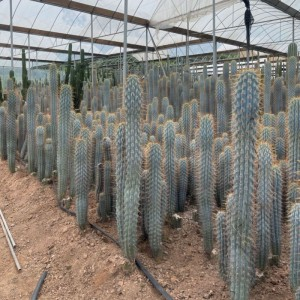(1) Most perennial sand plants have strong root systems that increase the water absorption of the sand. Generally, the roots are many times as deep and wide as the plant height and width. The transverse roots (lateral roots) can extend far in all directions, will not be layered, but will distribute and grow evenly, will not concentrate in one place, and will not absorb too much wet sand. For example, shrub yellow willow plants are usually only about 2 meters tall, and their taproots can penetrate sandy soil to a depth of 3.5 meters, while their horizontal roots can extend 20 to 30 meters. Even if a layer of horizontal roots is exposed due to wind erosion, it should not be too deep, otherwise the whole plant will die. Figure 13 shows that the lateral roots of the yellow willow planted for only one year can reach 11 meters.
(2) In order to reduce water intake and reduce the transpiration area, the leaves of many plants shrink severely, becoming rod-shaped or spike-shaped, or even without leaves, and use branches for photosynthesis. Haloxylon has no leaves and is digested by green branches, so it is called "leafless tree". Some plants have not only small leaves but also small flowers, such as Tamarix (Tamarix). In some plants, in order to inhibit transpiration, the strength of the epidermal cell wall of the leaf becomes lignified, the cuticle thickens or the leaf surface is covered with a waxy layer and a large number of hairs, and the stomata of the leaf tissue are trapped and partially blocked.
(3) The surface of the branches of many sandy plants will turn white or nearly white to resist the bright sunlight in summer and avoid being burned by the high temperature of the sandy surface, such as Rhododendron.
(4) Many plants, strong germination ability, strong lateral branching ability, strong ability to resist wind and sand, and strong ability to fill sand. Tamarix (Tamarix) is like this: Buried in the sand, adventitious roots can still grow, and the buds can grow more vigorously. Tamarix growing in lowland wetlands is often attacked by quicksand, causing the shrubs to accumulate sand continuously. However, due to the role of adventitious roots, Tamarix can continue to grow after falling asleep, so "a rising tide lifts all boats" and forms tall shrubs (sandbags).
(5) Many plants are high-salt succulents, which can absorb water from high-salt soil to maintain life, such as Suaeda salsa and salt claw.

Post time: Sep-11-2023